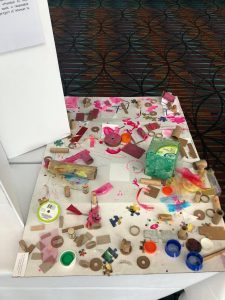Children’s Art Gallery – Submissions Open
VAAEYC invites programs to showcase developmentally appropriate art created by children at the Annual Conference. The art will be on display throughout the conference to highlight the wonderful artwork created in classrooms, with a focus on highlighting the process that occurs in making art within the classroom.
This goal of the artwork display is to celebrate the art, as well as call attention to developmentally appropriate practice in art and its importance in a child’s overall development and learning. We hope that educators will find the displays inspiring and use it as self-reflection on best practices. At the end of this message is a helpful guide to process-focused art opportunity.
Each program that has accepted artwork on display will be given ONE COMPLIMENTARY full conference registration.*
Here are the easy guidelines for submitting Artwork.
- Let us know what you are bringing so we can hold appropriate space by completing this form and send a discount code for the program.
- Be sure to include a written narrative about the process used to create art in the classroom. Pictures are great!
- Prepare the Artwork for display on tri-fold boards and bring to the conference for set up no later than 8:00 a.m. on Thursday, April 3. Draped tables will be available for the art set up, first-come, first-selected.
- Collect the Artwork to bring back to your program and families no later than 1:00 p.m. on Saturday, April 5.
Please let us know by March 15, 2025.
Questions to consider as you prepare your submission:
- List three examples of how you acknowledge the child’s actions or mediums during
art processes. - How do you expand on the child’s advanced vocabulary using art-related terms and
opportunities? - Describe how you observe, in the moment, what a child is doing during art and extend
what is happening during those moments. - How do you set up art learning opportunities to ensure they are open-ended and
process-focused? - If an individual approached you about why open-ended art is so crucial to children’s
development, what would you say to them?

